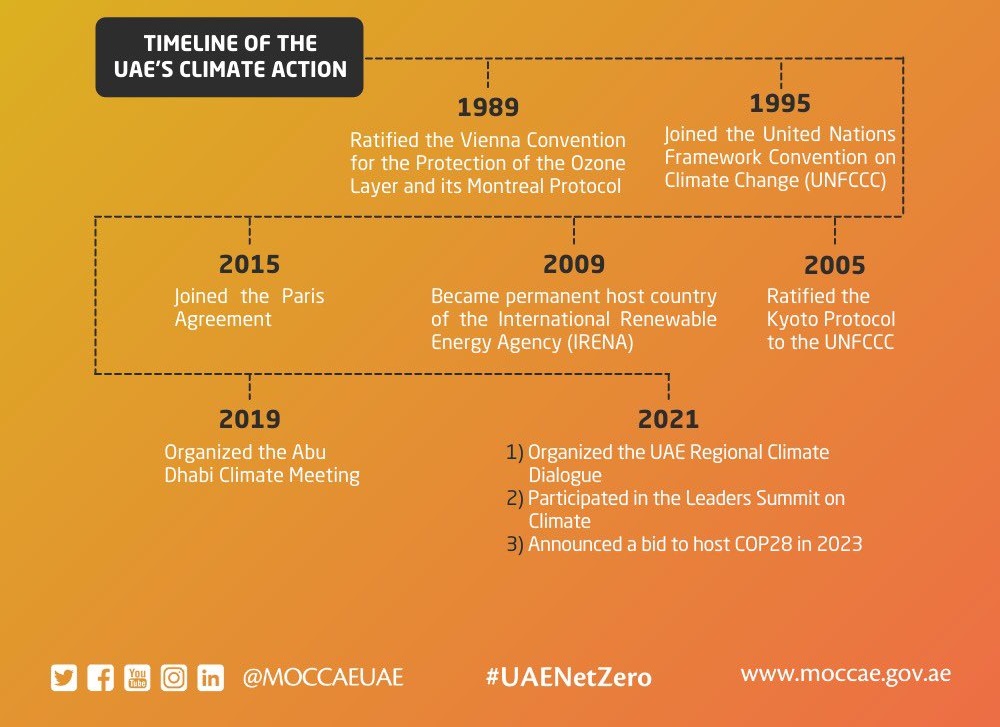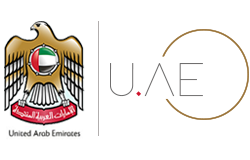UAE Net Zero 2050
The UAE Net Zero by 2050 strategic initiative is a national drive to achieve net-zero emissions by 2050, making the Emirates the first Middle East and North Africa (MENA) nation to do so. The initiative aligns with the Paris Agreement, which calls on countries to prepare long-term strategies to reduce greenhouse gas (GHG) emissions and limit the rise in global temperature to 1.5 C compared to pre-industrial levels.
The UAE Net Zero by 2050 strategic initiative is a national drive to achieve net-zero emissions by 2050, making the Emirates the first Middle East and North Africa (MENA) nation to do so.
Strategic alignment
The initiative aligns with the Principles of the 50 - the UAE’s roadmap for accelerating national economic development to mark the country’s golden jubilee year, as the nation enters a new 50-year cycle of growth. The major economic opportunities offered by the path to net zero directly support a vision to develop the Emirates into the most dynamic economy in the world.
The UAE Net Zero 2050 strategic initiative aligns with the Paris Agreement, which calls on countries to prepare long-term strategies to reduce greenhouse gas (GHG) emissions and limit the rise in global temperature to 1.5 C compared to pre-industrial levels.
Coordination of efforts
The Ministry of Climate Change and Environment (MOCCAE) will lead and coordinate efforts to execute the UAE Net Zero by 2050 strategic initiative and ensure collaboration at national level to fulfil this objective. Stakeholders in key sectors, such as energy, economy, industry, infrastructure, transport, waste, agriculture, and the environment, will update relevant plans, strategies, and policies, and implement initiatives and projects to achieve net zero by 2050 in line with their needs and growth requirements.
Federal and local government authorities will be responsible for preparing comprehensive studies and developing plans that introduce the measures necessary to reduce emissions while also ensuring economic growth based on principles of sustainability.
Renewable energy
The deployment and use of clean energy solutions is one of the main pillars of the UAE’s model of addressing the challenge of climate change and reducing GHG emissions. The country began financing clean energy projects more than 15 years ago, and has invested over 40 billion USD in the sector to date. Current trends predict the production capacity of clean energy, including solar and nuclear, to reach 14 GW by 2030, up from about 100 MW in 2015 and 2.4 GW in 2020.
The UAE supports green infrastructure and clean energy projects worldwide, and has invested in renewable energy ventures worth around 16.8 billion USD in 70 countries with a focus on developing nations. It has also provided more than 400 million USD in aid and soft loans for clean energy projects.
The UAE’s history of climate action
The UAE Net Zero by 2050 strategic initiative builds on the country’s three decades of climate efforts and represents a strategic target for the next three decades.

Read related news coverage on WAM.
What is net zero?
Resources:
- For a livable climate: Net-zero commitments must be backed by credible action – United Nations
- Net Zero by 2050 - A Roadmap for the Global Energy Sector – International Energy Agency
The UAE’s Hydrogen Leadership Roadmap
The UAE’s Hydrogen Leadership Roadmap is a comprehensive national blueprint to support domestic, low-carbon industries, contribute to the UAE’s net-zero strategy and establish the country as a competitive exporter of hydrogen.
Read more about the UAE’s Hydrogen Leadership Roadmap (PDF, 884 KB).



